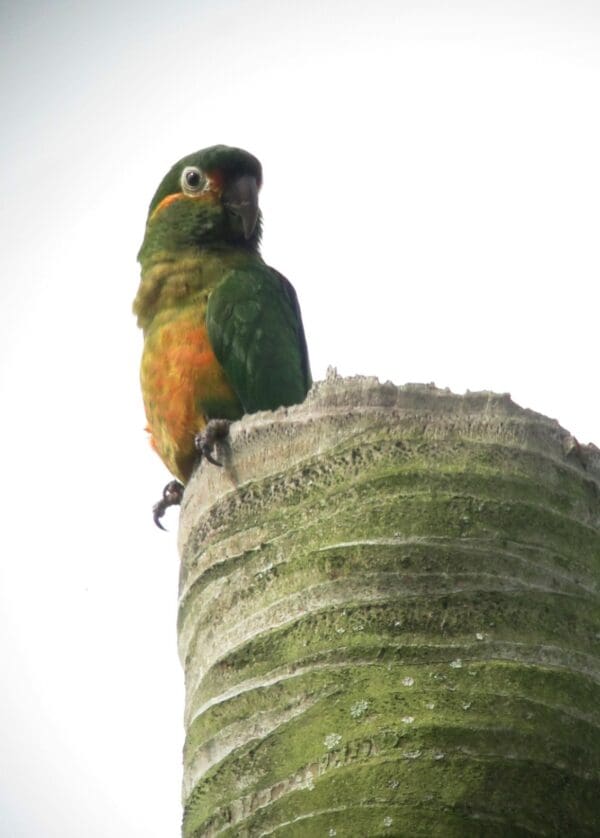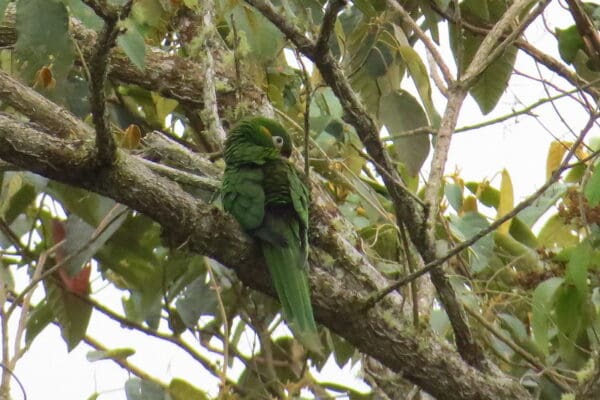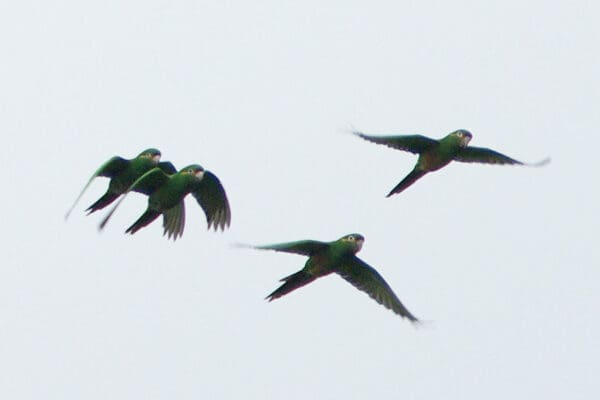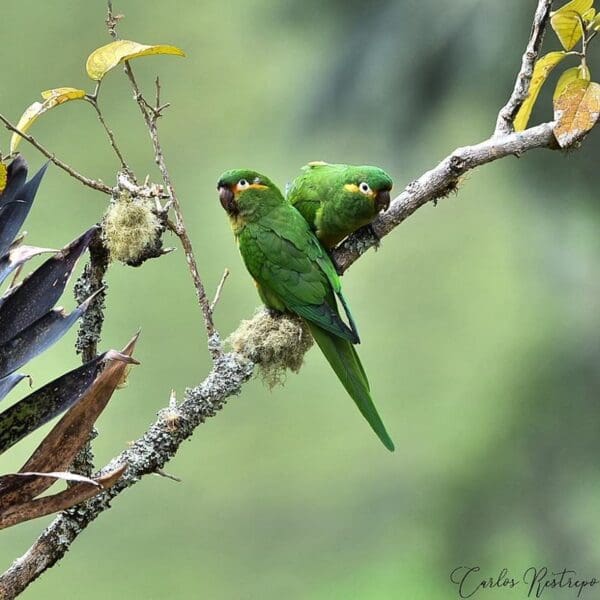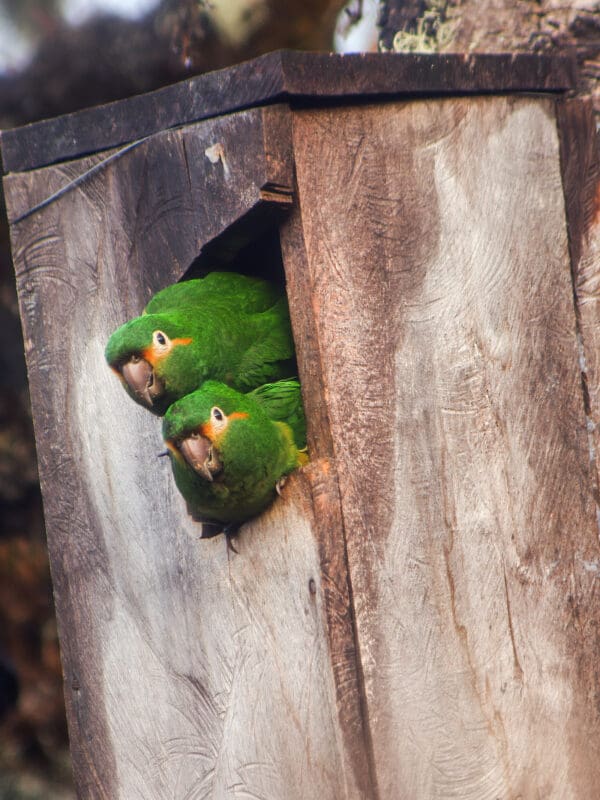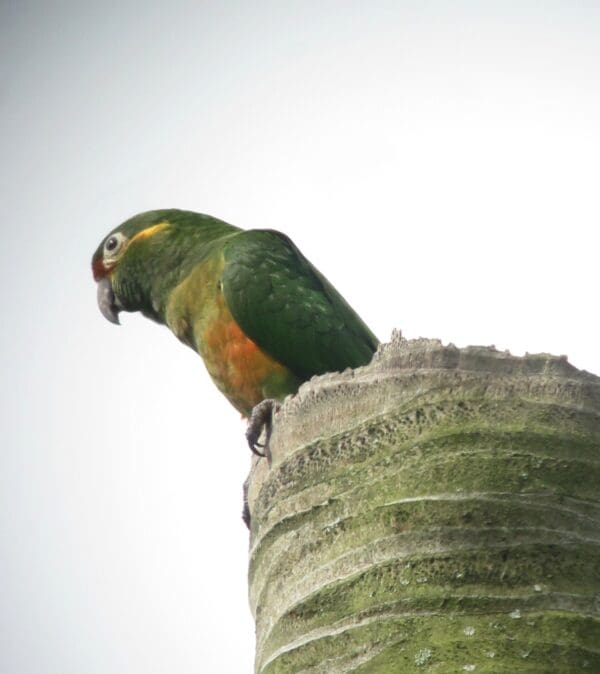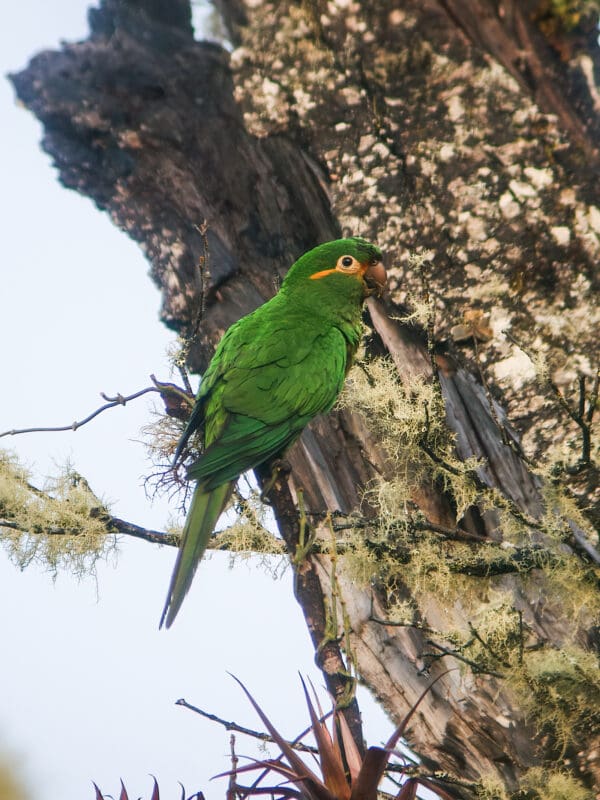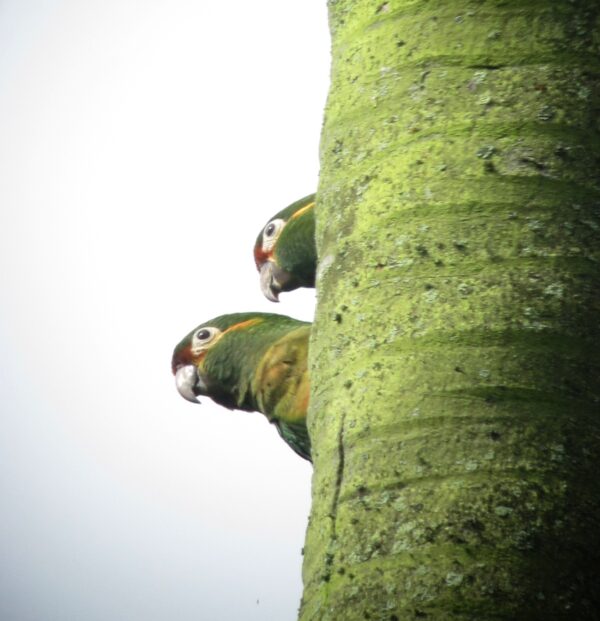Golden-plumed Conure
Also known as:
Golden-plumed Parakeet
Also known as:
Golden-plumed Parakeet
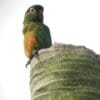
![© Bryant Olsen [CC BY-NC 2.0] via Flickr A wild Golden-plumed Conure preens itself](https://gt2024.parrots.org/wp-content/uploads/2023/01/wpt_Golden-plumed-Conure_1327-5-100x100.jpg)
![© Dave Curtis [CC BY-SA 2.0] via Flickr Wild Golden-plumed Conures fly in a small flock](https://gt2024.parrots.org/wp-content/uploads/2023/01/wpt_Golden-plumed-Conure_1327-4-100x100.jpg)
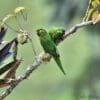
![© Nick Athanas [CC BY-NC-SA 2.0] via Flickr](https://gt2024.parrots.org/wp-content/uploads/1990/05/Golden-plumed-Conures-Nick-Athanas-100x100.jpg)
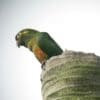
![© Nick Athanas [CC BY-NC-SA 2.0] via Flickr A wild Golden-plumed Conure perches in a tree](https://gt2024.parrots.org/wp-content/uploads/1990/05/Golden-plumed-Conure-Nick-Athanas-100x100.jpg)
![© Félix Uribe [CC BY-SA 2.0] via Flickr](https://gt2024.parrots.org/wp-content/uploads/1990/05/Golden-plumed-Conures-nest-Felix-Uribe-100x100.jpg)
DID YOU KNOW?
Golden-plumed Conures are found up to 3400 m (11,152 ft).

Leptosittaca

branickii
Size:
35 cm (13.6 in)
Weight:
Not recorded.
Subspecies including nominate:
one
Colour Adult:
Both adults green in colour, yellowish on underparts, and washed with orange on abdomen; frontal band reaching to orange lores; orange band meeting yellow line beneath eye and reaching back to form tuft of elongated feathers reaching past ear coverts; green tail washed with red. Beak dark grey. Eye ring bare and grey/white. Eye orange.
Colour Juvenile:
As in adults.
Call:
Calls are described as loud and shrill, in flight or perched. Continuous chatter indicates presence of feeding group.
Content Sources:
CITES
BirdLife International
Cornell Lab of Ornithology/Birds of the World
A Guide to Parrots of the World, Juniper and Parr, 1998
Parrots of the World, Forshaw, 2006. 2010 edition
Captive Status:
Not found in captivity.
Longevity:
—
Housing:
—
Diet:
—
Enrichment:
—
Nest Box Size:
—
Clutch Size:
Not recorded.
Fledging Age:
—
Hatch Weight:
—
Peak Weight:
—
Weaning Weight:
—
World Population:
11,000-30,000 individuals.
IUCN Red List Status:
Least Concern
CITES Listing:
Appendix II
Threat Summary:
This species is affected by habitat loss and degradation, which has been considerable throughout its range, with 90-93% of mountain forest lost in Colombia; less in Peru. Throughout its range this loss has slowed in recent years.
Range:
Scattered throughout patchy ranges in Andes highlands of all three ranges in Colombia; also Ecuador to S Peru.
Habitat:
Found from 2400-3400 m (7872-11,152 ft) in temperate forest, elfin woodland, cloud forest and treeline shrubbery.
Wild Diet:
Diet includes the seeds and fruits of Brunellia goudoti, Podocarpus oleifolius, Gorgonia humboldtii and Ocotea infraveolata. Also Croton sp., Ficus sp., Brunellia sp., Prumnopytis montanus, Euphorbia latazi, Phyllantus salvifolius, fruits of plants in the family Melastomataceae, as well as cultivated corn. The birds obtain water from epiphytic canopy plants Tyllandsia sp. and Bromeliaceae.
Ecology and Behaviour:
Generally seen in flocks outside the breeding season. Birds make daily altitudinal movements, upland, then returning to lower forests to roost. Noisy and conspicuous. Highly active and always on the move.
Clutch and Egg Size:
Not recorded.
Breeding Season:
February, Colombia; August, Ecuador. Nest is in cavity in broken-off treetop or in the trunk.
Related Links:
—
